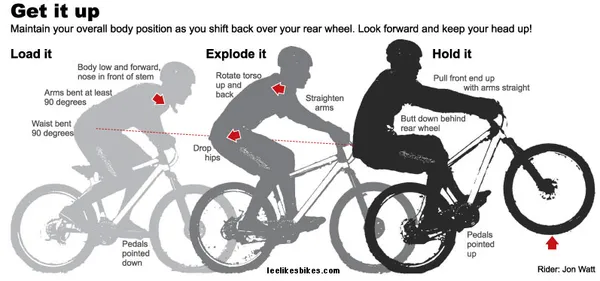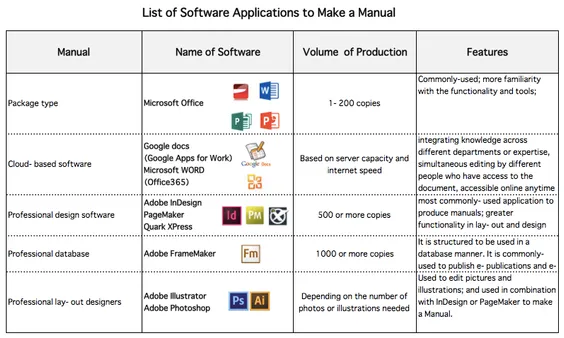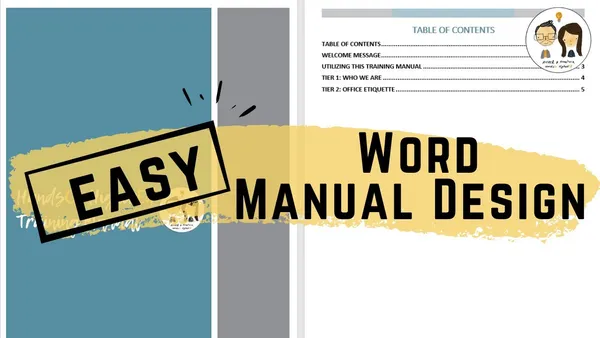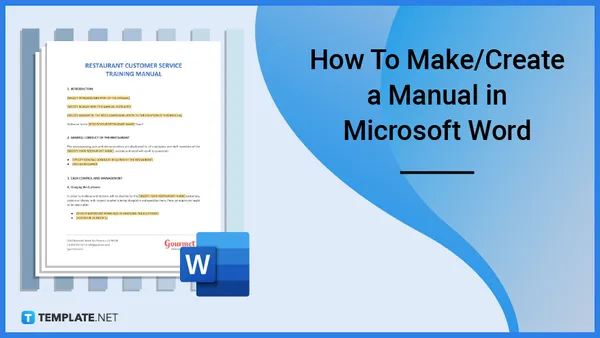Table of Contents
Welcome to Kizworld, your ultimate resource for creating user-friendly manuals that empower your audience with knowledge. In today's digital age, manuals have become essential tools for navigating complex products, services, and processes. Whether you're a technical writer, a product developer, or an entrepreneur, knowing How to do a manual is a valuable skill. Our comprehensive guide will take you through the steps of writing a manual, from defining its purpose to publishing and distributing it. With our tips and techniques, you'll learn how to create clear, concise, and engaging manuals that help users get the most out of your products or services.
How to do a Manual: Master the Art of Automotive Transmission
I. What is a Manual?
What is a Manual?
A manual is a comprehensive guide that provides step-by-step instructions, explanations, and illustrations to help users understand and operate a product, service, or process. Manuals are essential tools for users to learn how to use a product or service effectively and safely. They can also serve as a reference guide for troubleshooting and maintenance.
Manuals come in various formats, including printed booklets, online documents, and interactive tutorials. The format of a manual depends on the nature of the product or service and the target audience. Printed manuals are often used for complex products or services that require detailed instructions. Online manuals are convenient for users who prefer to access information digitally. Interactive tutorials provide a more engaging and interactive learning experience.
- Printed manuals
- Online manuals
- Interactive tutorials
II. Why is it Important to Have a Manual?
Having a manual is important for several reasons. First, it helps users understand how to use a product or service correctly. This can prevent errors, accidents, and damage to the product or service. Second, a manual can help users learn about the features and benefits of a product or service. This can help them get the most out of their purchase. Third, a manual can serve as a reference guide for troubleshooting and maintenance. This can help users solve problems and keep their product or service in good working condition.
In addition to these benefits, manuals can also help businesses improve customer satisfaction and reduce support costs. By providing users with clear and concise instructions, businesses can help them avoid problems and get the most out of their products or services. This can lead to increased customer satisfaction and reduced support costs.
Benefit | Description |
Improved user understanding | Helps users understand how to use a product or service correctly |
Increased feature awareness | Helps users learn about the features and benefits of a product or service |
Troubleshooting and maintenance assistance | Serves as a reference guide for troubleshooting and maintenance |
Improved customer satisfaction | Helps businesses improve customer satisfaction by providing clear and concise instructions |
Reduced support costs | Helps businesses reduce support costs by helping users avoid problems |
III. Why is it Important to Have a Manual?
Why is it Important to Have a Manual?
Clarity and Consistency
A well-written manual provides clear and concise instructions, ensuring that users can easily understand and follow the steps outlined. This clarity helps to reduce errors and misunderstandings, leading to a more efficient and productive user experience. Consistency in the manual's tone, language, and formatting also contributes to a seamless and user-friendly experience.
- Clear instructions reduce errors and misunderstandings.
- Consistent tone, language, and formatting enhance user-friendliness.
Improved Safety
A comprehensive manual can help to improve safety by providing users with the necessary information to operate products or perform tasks safely. By outlining potential hazards, safety precautions, and emergency procedures, manuals can help to prevent accidents and injuries. This is especially important for products or tasks that involve complex or potentially dangerous processes.
Benefit | Example |
|---|---|
Hazard identification | Warnings about potential electrical hazards in a product manual. |
Safety precautions | Instructions for wearing protective gear when using a power tool. |
Emergency procedures | Steps to take in case of a fire or other emergency. |
Enhanced Troubleshooting
A well-organized manual can assist users in troubleshooting common problems or issues that may arise with a product or service. By providing step-by-step instructions and potential solutions, manuals empower users to resolve minor issues on their own, reducing the need for external support or repairs. This can save time, money, and frustration for both users and manufacturers.
- Step-by-step instructions guide users through troubleshooting processes.
- Potential solutions empower users to resolve issues independently.
Increased Customer Satisfaction
A well-crafted manual can contribute to increased customer satisfaction by providing users with the resources they need to get the most out of a product or service. When users can easily find the information they need and successfully operate or maintain a product, they are more likely to be satisfied with their purchase. This positive experience can lead to repeat business, positive word-of-mouth, and brand loyalty.
- Easy access to information enhances user satisfaction.
- Successful product operation leads to positive experiences.
- Positive experiences foster repeat business and brand loyalty.
IV. How to Write a Manual
How to Write a Manual
A well-crafted manual provides clear guidance and information to users, empowering them with knowledge. To create an effective manual, follow these steps:
- Define the Purpose and Scope: Clearly outline the manual's purpose and intended audience. Determine the scope of the manual, including the topics it will cover and the level of detail required.
- Gather Information and Organize Content: Collect all relevant information, including technical data, user feedback, and industry standards. Organize the content logically, ensuring a smooth flow of information.
Tip: Refer to our guide on How to Organize Information Effectively for tips on structuring your manual's content.
- Write the Manual: Use clear and concise language, avoiding jargon and technical terms that may confuse readers. Write in a conversational tone, engaging the reader and making the manual easy to understand.
- Review and Revise: Once the manual is written, thoroughly review it for accuracy, clarity, and completeness. Seek feedback from subject matter s and potential users to ensure the manual meets their needs.
Tip: Utilize our guide on How to Write Clearly and Concisely to enhance the readability of your manual.
- Publish and Distribute the Manual: Make the manual accessible to users in various formats, including print, digital, and online. Ensure the manual is easily discoverable and accessible to those who need it.
Tip: Refer to our article on How to Publish and Distribute a Manual for strategies on effectively sharing your manual with users.
V. Tips for Writing an Effective Manual
- Keep it Simple and Easy to Understand: Use clear and concise language, avoiding jargon and technical terms. Write in a conversational tone, engaging the reader and making the manual easy to understand.
- Use Clear and Concise Language: Avoid jargon and technical terms that may confuse readers. Write in a conversational tone, engaging the reader and making the manual easy to understand.
- Use Visuals to Enhance Understanding: Incorporate diagrams, charts, and images to illustrate concepts and make the manual more visually appealing. Visuals can help readers grasp complex information more easily.
- Test the Manual with Users: Before finalizing the manual, test it with a group of users to gather feedback. This will help you identify any areas that need improvement and ensure the manual meets the needs of its intended audience.
- Update the Manual Regularly: As products and technologies evolve, it's important to keep the manual updated with the latest information. This ensures that users have access to the most accurate and up-to-date information.
VI. Tips for Writing an Effective Manual
Tips for Writing an Effective Manual
Keep it Simple and Easy to Understand
Prioritize clarity and conciseness. Break down complex concepts into smaller, manageable chunks, using simple, straightforward language that your readers can easily grasp. Avoid jargon, technical terms, and complicated sentences that might confuse them.
Tip for Simple and Easy Understanding | Example |
|---|---|
Language: | Use conversational, everyday language, not formal or technical jargon that alienates readers. |
Structure: | Present information in a logical, step-by-step manner. Use headings, subheadings, and bullet points to organize content clearly. |
Illustrations: | Include clear, well-labeled diagrams, screenshots, or charts to visually reinforce text and make concepts easier to understand. |
Keep it Short: | Avoid overwhelming readers with lengthy documents. Split content into smaller sections or subtopics for easier digestion. |
Use Clear and Concise Language
Avoid technical jargon. That's why using clear and concise language is essential. This means using words and phrases that are easy to understand, even for someone who is not familiar with the subject matter. For instance, using "click the button" instead of "utilize the interactive user interface element." Check out our article on The Best Gymnastics Apps and Websites to learn more.
Use Visuals to Enhance Understanding
Incorporating visuals can greatly enhance the reader's comprehension and engagement. This includes illustrations, diagrams, charts, graphs, and even videos. These visuals can help break down complex concepts, demonstrate procedures, and make the content more visually appealing. Did you know that, Gymnastics offers numerous benefits for kids?
VII. Conclusion
Creating a well-written manual is an art that requires careful planning, organization, and attention to detail. By following the steps outlined in this comprehensive guide and incorporating the effective techniques discussed, you can craft manuals that are clear, informative, and user-friendly. Remember, the goal is to empower your audience with knowledge and provide them with the resources they need to successfully navigate your product, service, or process. With a well-crafted manual, you can enhance user satisfaction, reduce support inquiries, and establish your brand as a provider of quality documentation.